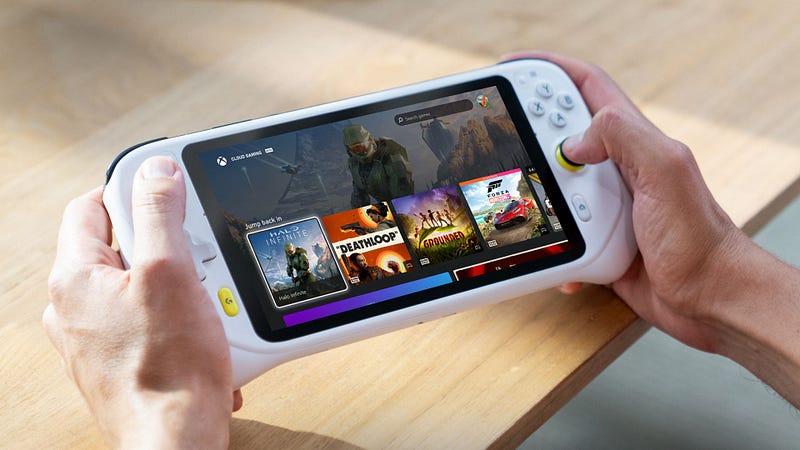Microsoft's Opportunity: Launching a Portable Xbox Console
Written on
The Rise of Portable Gaming
We are currently in the midst of a revolution in portable gaming. The concept of the Nintendo Switch, which allows players to enjoy gaming both at home and on the go, has inspired numerous hardware creators recently.
Today, many devices enable gamers to play on the move while still being able to connect to their home televisions. Various retro consoles manufactured in China, like those from Powkiddy and Anbernic, utilize USB-C or Mini-HDMI connections to support this dual functionality. This capability allows gamers to enjoy their favorite classic titles during commutes or while relaxing at home with a controller.
Notably, the trend has shifted toward portable PC gaming as well. Devices such as the AYN Loki, AYANEO Air, and GPD Win 3 allow gamers to carry their favorite PC titles wherever they go. This resurgence in portable gaming was unexpected, especially with the rise of smartphones just a few years ago.

Consumer Demand for Versatile Gaming
It appears that gamers want the best of both worlds: the ability to enjoy home console gaming both at home and on the move.
We can't overlook Valve's Steam Deck, which made a significant impact in 2022. It delivers gaming experiences comparable to the PlayStation 4 or Xbox One in a portable format. Additionally, it functions as a Linux PC, capable of running software for productivity tasks. Gamers can also connect it to their TVs for multiplayer gaming sessions.
This versatile approach, championed by the Nintendo Switch, has transformed the gaming market. So, how can Microsoft effectively step into the portable console arena?
In this video, the discussion revolves around the potential for Microsoft to create a handheld console, exploring the possibilities and implications.
Strategies for Microsoft's Portable Console Entry
Microsoft has two main strategies to consider for entering the portable console market. The first aligns with their existing approach to promote Xbox Cloud Gaming and Game Pass. The second, however, would involve creating traditional portable hardware from the ground up.
Microsoft's Focus on Game Pass
Microsoft is keen on increasing Game Pass Ultimate subscriptions. This service, reminiscent of Netflix, offers a vast library of games from various publishers, accessible through downloads or streaming via Xbox Cloud Gaming.
Game Pass has been a tremendous success, boasting 25 million subscribers at the beginning of 2022—a significant increase from 2020. The library continues to grow, thanks in part to partnerships with services like EA Play and acquisitions of major companies like Bethesda and Activision-Blizzard.
The Licensing Option
Given the circumstances, a practical approach for Microsoft would be to pursue a licensing agreement with an established manufacturer. This strategy would allow Microsoft to sidestep costly research and development while building a brand in collaboration with a third-party producer.
Imagine a budget-friendly, streaming-oriented handheld device featuring Xbox branding on store shelves by Christmas 2023. This could significantly boost subscriptions to Game Pass Ultimate, especially since gamers are already utilizing devices like the Steam Deck and AYN Odin to stream Xbox Game Pass titles.
Microsoft has shown interest in licensing their Xbox brand to third-party hardware manufacturers. Recently, they announced that Xbox Cloud Gaming would be available on the Logitech G Cloud Gaming Handheld.

The Hardware Approach
While a streaming-focused device may seem more achievable, many gamers are eager for a fully functional Xbox gaming console in a portable form. The appeal of portable gaming PCs lies in their ability to run games locally, avoiding the latency associated with streaming.
However, developing a new portable Xbox would be a considerable investment, especially amid the ongoing parts shortages affecting the tech industry.
Microsoft already has two distinct hardware solutions available: the Xbox Series X and Series S, indicating their willingness to create varied hardware for different markets.
If Microsoft were to launch a device similar to the Switch, it would likely evolve from the Xbox Series S architecture, rather than introducing an entirely new product line. The Series S’s all-digital design emphasizes a compact form factor at a lower price point.
Transitioning the Series S from a traditional console to a portable device would be challenging, but it could provide an opportunity for Microsoft to rejuvenate the Series S lineup, especially if timed with a mid-generation refresh.

Considering Competitive Timelines
It is also essential to consider Nintendo's timeline for a potential Switch 2 or Switch Pro. Microsoft may benefit from observing how the competition responds before committing to their own hybrid solution.
Final Thoughts
While my assertion that now is the opportune moment for Microsoft to enter the portable console market is speculative, it is grounded in some merit. The hybrid portable gaming system is currently trending, and the desire for a home console experience that is also portable is unlikely to fade.
I suspect that the Xbox team has already contemplated this idea, particularly following the Steam Deck's success. Ultimately, however, the decision will hinge on financial viability.
In the meantime, I will continue to enjoy my Steam Deck, Analogue Pocket, and Nintendo Switch, whether I'm at home or on the go.
Thank you for taking the time to read my thoughts! If you found this article enjoyable, please consider leaving a clap or two, as it helps my content reach more readers. For updates on my future publications, feel free to subscribe to my email list on Medium to receive my latest articles directly in your inbox.
If you're new to Medium, consider becoming a member for just $5 a month to access stories from myself and countless other writers. Using this membership link will ensure that 50% of your subscription goes directly to me. Thank you for your support!